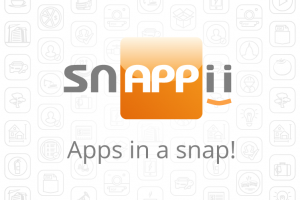 From a variety of daily downloaded mobile applications, only some stay in demand. A research on mobile behavior shows that today’s consumers are spending over 85% of their time on their smartphones using native applications, but the majority of their time – 84% – is spent using just 5 non-native apps they’ve installed from the App Store. Some mobile apps are not compelling enough for consumers to download and use them on their devices, and there are some which don’t live up to their expectations, thereby getting removed almost immediately after being installed.
From a variety of daily downloaded mobile applications, only some stay in demand. A research on mobile behavior shows that today’s consumers are spending over 85% of their time on their smartphones using native applications, but the majority of their time – 84% – is spent using just 5 non-native apps they’ve installed from the App Store. Some mobile apps are not compelling enough for consumers to download and use them on their devices, and there are some which don’t live up to their expectations, thereby getting removed almost immediately after being installed.
Google, in conjunction with the market research firm Ipsos MediaCT, has conducted a study to find out what drives people to install apps, what keeps them coming back, and why they abandon apps.
Clear Value of the App
The study notes one of the methods to remain in the ranks: prove the value and utility of your app. Definitely, apps will be in demand if they demonstrate clear functions. For example, Snappii’s Construction Manager app, designed to ensure the accurate and regular flow of information between company headquarters and construction sites, has a clear set of useful functions (work online/offline; tracking of information; calculator and others) which truly provide benefits to the construction industry.
App Re-Engagement
The study has identified an important point – the need for app re-engagement. This process can have some directions, for example maintaining the usual sought after functionality by periodic innovations. People want apps that make their lives easier and serve a specific function, and they get used to such apps. However, the challenge is to avoid falling into the trap of developing an app that serves a single purpose and to avoid stagnation. Given the huge competition in the modern world, even if your app is in a large demand, you can easily get left behind at the slightest relaxation. And over again, Construction Manager app is a good example. Snappii has recently added a unique feature allowing users to upload any existing PDF form into the app, customize it, and share in many ways.
One more important point! Apps are a powerful way to build stronger relationships with customers, and apps’ popularity and viability directly depend on them. So, remember that customers always come first!

 Login
Login

